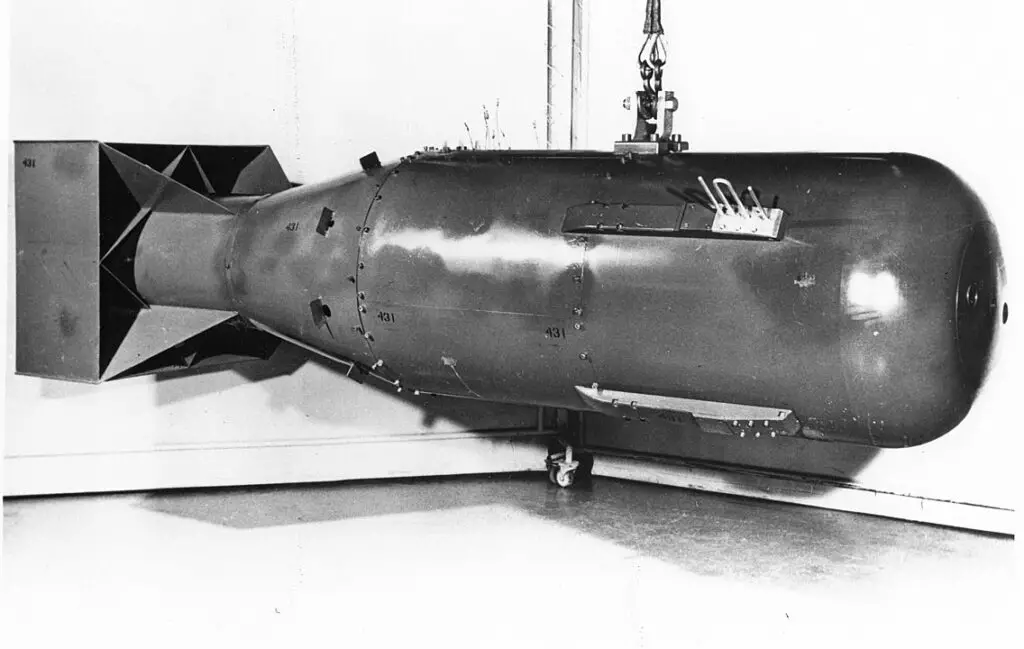August 6, 1945, marks a significant turning point in human history; it was on this day that the first atomic bomb, codenamed “Little Boy”, was dropped on the city of Hiroshima, Japan. The deployment of “Little Boy” changed the dynamics of warfare and marked the dawn of the nuclear age. This devastating event not only ended World War II, but also started a new era of geopolitical dynamics.
To gain a deeper understanding of this event, let’s explore 25 interesting facts about “Little Boy”, the bomb dropped on Hiroshima.
- Little Boy was named after a character in a series of British children’s books, “Little Boy Blue”, reflecting the American practice of codenaming operations and weapons in a somewhat whimsical fashion.
- The bomb was 10 feet long and 28 inches in diameter. It was a compact design that required a significant amount of Uranium-235, a rare isotope of uranium.
- Little Boy was an atomic bomb that used nuclear fission to release its destructive energy, unlike the hydrogen bombs which employ nuclear fusion.
- The bomb contained around 140 pounds (64 kilograms) of uranium-235, but only about 2% of it underwent nuclear fission.
- The bomb was dropped by the B-29 Superfortress Enola Gay, named after the mother of the aircraft’s commander, Colonel Paul Tibbets.
- The aircraft took off from Tinian, an island in the Pacific, six hours before the bomb was dropped.
- The bombing mission was known as Special Bombing Mission #13.
- The target, Hiroshima, was chosen because of its military significance as it was a major supply and logistics base for the Japanese military.
- Despite its size and weight (approximately 9,700 pounds), Little Boy reached a speed of about 1,200 kilometers per hour (750 miles per hour) when it was dropped.
- The bomb detonated approximately 600 meters (2,000 feet) above the ground to maximize the blast effect.
READ MORE: 50 facts you need to know and understand about the atomic bomb dropped on Nagasaki - The explosion released about 15 kilotons of energy, equivalent to 15,000 tons of TNT.
- The immediate blast killed approximately 70,000 people, but the long-term effects such as radiation sickness and cancer raised the death toll to an estimated 140,000 by the end of 1945.
- Little Boy was the first atomic bomb to be used in warfare. It was followed three days later by “Fat Man” dropped on Nagasaki.
- The bomb’s design was so simple and untested that the creators were confident it would work without any prior testing.
- The Little Boy design was relatively inefficient; it used much more fissile material than the more complex, but efficient implosion-type atomic bomb like Fat Man.
- The fissile material for the bomb was produced at the Clinton Engineer Works in Oak Ridge, Tennessee, one of the key sites of the Manhattan Project.
- The bomb was assembled on Tinian by Project Alberta, a section of the Manhattan Project responsible for the delivery of the nuclear weapons.
- Despite the destruction caused by the bomb, Hiroshima was rebuilt and is now a thriving city with a population of over a million people.
- Today, the Hiroshima Peace Memorial (Genbaku Dome) stands as a grim reminder of the event and a symbol of peace. It was one of the few buildings that were near the hypocenter and partially survived the blast.
- The heat generated by the bomb was so intense that it caused “nuclear shadows” — the blast permanently etched the shadows of people and objects onto walls and pavements.
READ MORE: 50 Interesting Facts About the Atomic Bomb You Need to Know and Understand - On board the Enola Gay during the Hiroshima bombing mission was a second, fully-armed atomic bomb as a backup, just in case the first one failed to detonate.
- The uranium gun-type design of Little Boy was soon deemed obsolete after the war, due to its inefficiency and the high demand for fissile material.
- The uranium for Little Boy was delivered in a single shipment by the USS Indianapolis. Tragically, on its return journey, the ship was sunk by a Japanese submarine, resulting in the greatest single loss of life at sea in the history of the U.S. Navy.
- The order to drop the bomb was given by President Harry S. Truman. However, the decision remains controversial, with critics arguing that Japan was already on the brink of surrender.
- Every year on August 6, a Peace Memorial Ceremony is held in Hiroshima to remember the victims and promote world peace. A minute of silence is observed at 8:15 AM, the exact time when the bomb was dropped.
READ MORE: 25 Interesting Facts about the Atomic Age, aka the Nuclear Age
“Little Boy” represents a potent symbol of the destructive potential of nuclear weapons and continues to shape our understanding of war and peace. The history of this single bomb intertwines human innovation, devastation, resilience, and the constant pursuit of peace.


